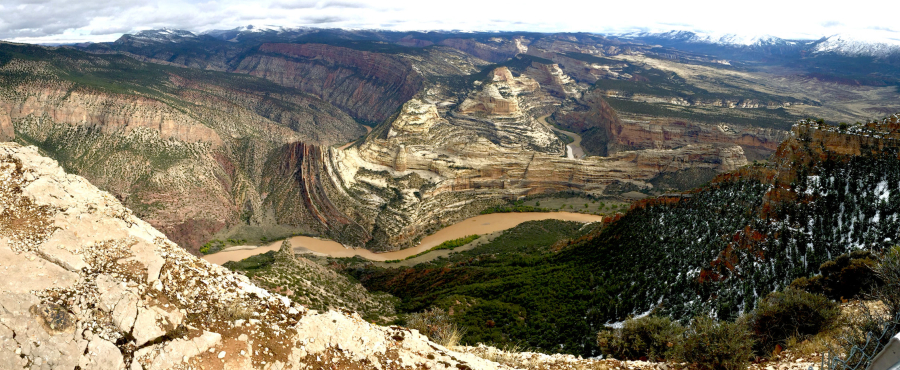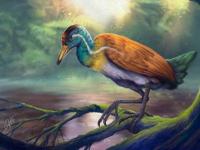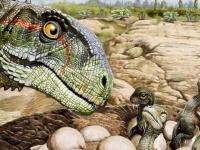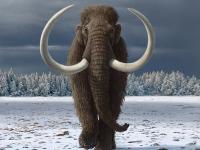Dinosaur Fossils: Portal to the Past

Dinosaur fossils a portal to the past.
I ran my hand over the face of the gray cliff that rose above me. The rock was rough, with fissures and divots and an abrasive texture that tears skin.
My fingers found a smooth spot infused with stains that looked like rust. It felt like rock, and in one sense it was rock.
But for me, it was a portal to a period 150 million years ago. It was a yard-long dinosaur bone, embedded in rock, and so perfectly fossilized that the bone was easily distinguished from the finely veined marrow.
It was the femur of a sauropod, a giant, long-necked dinosaur that shook the ground as it walked through earth’s Jurassic Period.
The chance to run your hands over real dinosaur bones and connect with ancient life is just one of the treats that make Dinosaur National Monument unique, even if its remote location on the Utah-Colorado border make it among the least-visited sites in the National Park system
A three-hour drive from Salt Lake City, the monument is a hidden jewel visited by about 250,000 people annually. It harbors treasures for everyone, whether they be trained paleontologists or Barney lovers, nature photographers or philosophers struck by a landscape that is a 23-layer cake of rock formations documenting a billion years of earth’s history.
Spartan landscape
This is a colorful but spartan landscape that stimulates reflection and reminder that the world is old, and that our time here is short. Here, it’s easy to see that even rocks and rivers have a life span, as proven by an impressive peak known as Split Mountain, which got its name because the Green River cut the peak in two, leaving an imposing cliff behind that plunges straight down into the river.
The Green is one of two rivers flowing through the 211,000-acre area and cut its broad canyons, which range from 1,000 to 3,000 feet deep. The other is the Yampa, the latter the only major undammed tributary of the Colorado River.
Flowing green and brown, the two rivers converge near the center of the park at an oxbow bend called Steamboat Rock. The gorge here, as seen from the Harper’s Corner overlook, elevation 7,500 feet, features geological strata that are muted and less vibrant than those of the Grand Canyon, which is several hundred miles downstream. But the gorges that slink through the layers of rock that used to be seas and river bottoms have a majesty that has evoked superlatives for nearly 200 years.
“The scenery was on a grand scale, and never before did I live in such ecstasy for an entire month,” wrote John Welsey Powell, the famous explorer of the American Southwest, after he rafted down the Green River in 1869.
Even though it looks like a forsaken landscape, Dinosaur National Monument harbors plenty of life. Osprey soar through the canyons. Dinosaur is home to black bears, mountain lions, big horn sheep and unique species of lizards, fish and other species. The fall air has a pungent, tasteful aroma of pinyon pine and Utah juniper, which dapple the canyon walls and wedge their roots into rock fissures to survive the arid and cold climate of the a high desert.
But, the place is known best for life that thrived 150 million years ago, when the area was flat, warm and drained by an extinct river.
Paleontologist’s find
Dinosaur’s name comes from the discovery, in 1909, of eight dinosaur bones by Earl Douglas, a Carnegie Museum paleontologist. Further excavations revealed a virtual dinosaur graveyard located about 15 miles east of Vernal, Utah, at 5,000 feet above sea level.
Thousands of dinosaur fossils lay embedded in a steeply tilted layer of rock called the Morrison Formation. The find included entire skeletons, including whole skulls, both rarities.
Scientists have a straightforward explanation for the origins of this find. A drought caused a mass die-off. When the rains returned, the river washed the bones and carcasses downstream. They were deposited together and covered with silt and sand that hardened into rock over millions of years. Later, tectonic forces lifted and tilted the layer, and erosion exposed the old bones.
Douglas mined what he called “the quarry” and sent fossils to museums around the nation. But he insisted that the quarry later be preserved for the public to see and touch. The quarry, which is slightly narrower and slightly longer than a basketball court, has been protected from the elements since the 1950s by a building known as the Quarry Exhibit Hall.
The quarry wall is pitched due to the tectonic uplift that tilted it. That makes it more like viewing a giant canvas. About 1,500 bones lay on the quarry surface. One of them is a full specimen of a stegosaurus, a plant-eater with a small head, a row of bony plates down the back and a lethal cluster of spikes on its tail. Climbing up the quarry wall is prohibited, but the fossils at the top are visible from a mezzanine.
In all, the remains of 10 dinosaur species have been found in the monument. Some are on the trail outside the quarry where I found that big femur.
Dinosaur has other attractions, too. White water rafting, hiking through its canyons, examining (but not touching) petroglyphs or, if your have a suitable vehicle, visiting the old homestead of the colorful character Josie Morris. Most of the monument is designated wilderness and is a dark-sky preserve, great for skygazing.
The monument is accessed through five different paved roads, none of which connect, though rugged vehicles can get down into the Yampa River canyon, weather permitting. Most campgrounds are along the rivers, and thus accessible by raft and by foot but not by vehicle.
Cars seem out of place here, which is a place for your mind to connect to life eons ago to a time when dinosaurs, not humans, were masters of the earth.
Source: www.columbian.com








